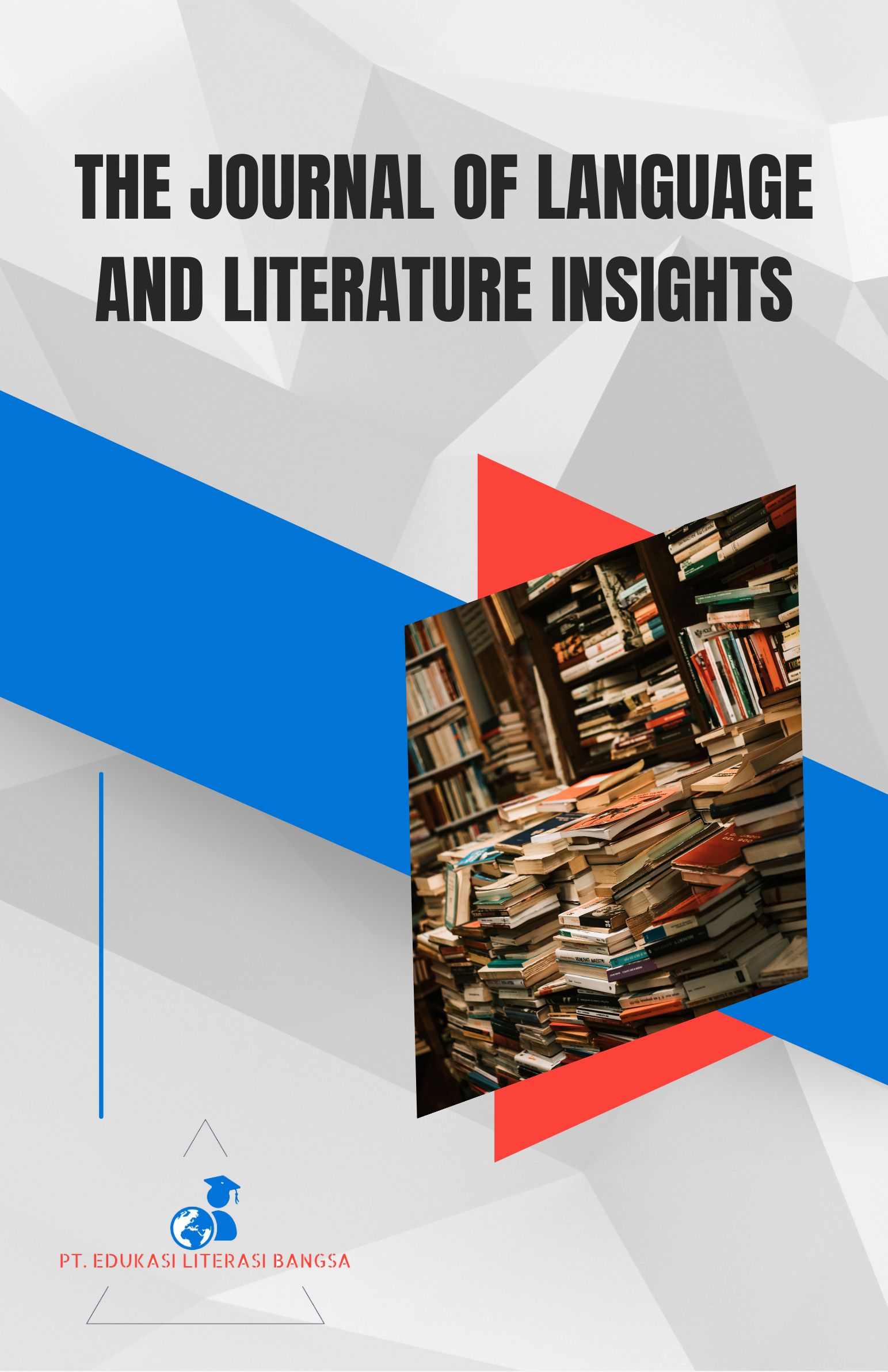“YOU MOTH-EATEN MAGGOT!”: FIGURATIVE LANGUAGE IN MATILDA
Keywords:
Figurative language, Matilda, Contextual MeaningAbstract
Figurative language is a significant component of literary works, contributing to enhanced expression, the creation of vivid imagery, and the addition of depth to narratives. This study, entitled "An Analysis of Figurative Language in Roald Dahl's Novel Matilda," aims to identify figurative language employed in novel Matilda and its contextual meanings using M.H. Abrams' (1999) theory. This research employed a descriptive-qualitative method, using M.H. Abrams' (1999) theory, which classified 16 types of figurative language. These devices have been shown to enhance meaning, evoke emotions, and create vivid imagery in literary works. This study collated 220 data, including 48 similes, 1 synecdoche, 75 metaphors, 3 metonyms, 53 hyperboles, 8 personifications, 2 paradoxes, 7 sarcasms, 4 allusions, 8 epithets, 1 euphemism, 1 symbol, and 9 ironies, with metaphors identified as the most prevalent. Metaphors enhance character depth and reader engagement. Figurative language sets the scene and conveys emotions. A comprehensive understanding of sentence context, situations, and the author's literary style is imperative for effective interpretation. This study supports English educators in integrating figurative language analysis into their teaching practices, aiding students in literary analysis and appreciation. The study's findings establish a foundation for future research on figurative language and contextual meaning. The study's methodology can be used for further literary analysis and could contribute to the development of linguistic and literary theories
Downloads
References
Abrams, M. H., & Harpham, G. G. (2009). A glossary of literary terms. Wadsworth Cengage Learning.
Arp, Thomas. R & Greg, J. (2020). Perrine’s Sound and sense: An Introduction to Poetry. New York: Harcourt College Publisher, 68.
Attardo, S. (2020). The linguistics of humor: An introduction. Oxford University Press.
Creswell, J. W., & Creswell, J. D. (2017). Research design: Qualitative, quantitative, and mixed methods approaches. Sage publications.
Holman, C. H., & Thrall, W. F. (1986). A handbook to literature.
Hornby, A. S., Cowie, A. P., Gimson, A. C., & Hornby, A. S. (1974). Oxford advanced learner’s dictionary of current English (Vol. 1035). Oxford university press Oxford.
Hutauruk, B. S. (2019). The Use of Figurative Languages on the Students’ Poetry Semester V at FKIP Universitas HKBP Nommensen. Journal of English Language and Culture, 9(2), 128–137. https://doi.org/10.30813/jelc.v9i2.1690
Magdalena, M. (2016). An Analysis Of Figurative Language In The Novel There You’ll Find By Jenny B. Jones. Journal of English Language and Literature (JELL), 01(01), 1–26.
McKee, A. (2003). Textual analysis: A beginner’s guide.
Miles, M. B., & Huberman, A. M. (1984). Qualitative data analysis: A sourcebook of new methods.
Safiitri, M. F. 2021. (2021). an Analysis of Figurative Language in Novel a.
Wahyuni, N. K. D. C., Utami, N. M. V., & Ariyaningsih, N. N. D. (2020). an Analysis of the Types ofFigurative Languages Foundin “the Adventures of TomSawyer” Novel By MarkTwain. Journal of Language and Applied Linguistics, 01(02), 81–92.
Winata, A. I. (2023). Stateinstitute for Islamic Studies of Metro 1444 H / 2023 M. 01(2023).
Downloads
Published
Issue
Section
License
Copyright (c) 2025 Imalia Suky Lely, M. Sayid Wijaya, Irawansyah Irawansyah (Author)

This work is licensed under a Creative Commons Attribution-ShareAlike 4.0 International License.













